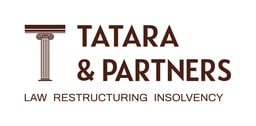News and developments
New draft bill implementing EU Restructuring Directive in Poland – still under consultation
On Friday 18th October Polish government published yet another draft of implementation of the Restructuring Directive (“Draft”).
The Draft seems to be a version minimum of implementation, also bearing in mind that most of the provisions regarding restructuring & insolvency field in Poland are already compliant with the Directive.
Our focus is on – what we may call – Polish version of absolute priority rule, using also cross-class cram-down mechanism.
According to proposed changes in Article 119 of Polish Restructuring Law:
(3) With the consent of the debtor, the arrangement is accepted, even though it did not obtain the required majority in some of the creditor groups covering the various categories of interests, if:
1) a majority of the creditor groups voted in favor of the arrangement, including at least one group of creditors referred to in Article 161(1a)(4), or creditors with a higher degree of satisfaction than the creditors whose receivables are referred to in Article 342(1)(2) of the Bankruptcy Law, and in the event of failure to meet this condition;
2) a group or groups of creditors constituting at least at least half of the groups belonging to those categories of creditors who in the event of bankruptcy proceedings would have received any satisfaction using a valuation that assumes continuation of the debtor's business.
(4) The arrangement referred to in paragraph (3) shall be accepted if the creditors of the group or groups that have spoken out against the acceptance of the arrangement shall receive through the arrangement a full satisfaction in a situation where creditors from another group with a lower degree of satisfaction in the bankruptcy proceedings shall receive through the arrangement any satisfaction.
(5) By the creditors with a higher degree of satisfaction referred to in paragraph (3)(1) item 1, or creditors with a lower degree of satisfaction referred to in paragraph 4, shall be understood as creditors who are satisfied to a higher or lower degree in the bankruptcy proceedings, in particular creditors with a correspondingly higher or lower satisfaction category, taking into account creditors satisfied under a separate distribution plan.
This quite complicated wording can be explained in the following example:
If we have 5 groups - 1 privileged group (rank (category) I in bankruptcy or collateral (security)) and 3 non-privileged groups (rank (category) II in bankruptcy) and 1 even more non-privileged group (rank (category) III in bankruptcy) - and in bankruptcy only ranks (categories) I and II (+secured) would get the funds, then in order to accept the arrangement it is necessary to support:
However, if the privileged group votes against, then for the “lower” groups to get anything, they must get full satisfaction. In the old draft, this was a higher (rather than full) satisfaction.
In summary, in the old draft, in order to overcome the objections of the privileged group, you had to give it more than the underprivileged. In the new draft, you have to give them 100%.
In our view, this may lead to decreasing number of concluded arrangements, making them more difficult to vote and create arrangement proposals.
From other interesting changes, the Draft clarifies the rules of operating when clash between restructuring and insolvency occurs, giving privilege to restructuring, but omits previously proposed enforcement sale effect of the sale within liquidation arrangement or escrow accounts for trustees in bankruptcy.
From what we know, several entities filed their positions towards the Draft, including INSO Section of the Allerhand Institute, where we co-drafted the position, however these positions still has not been published on government legislation websites.
Authors: Paweł Kuglarz and Mateusz Kaliński
